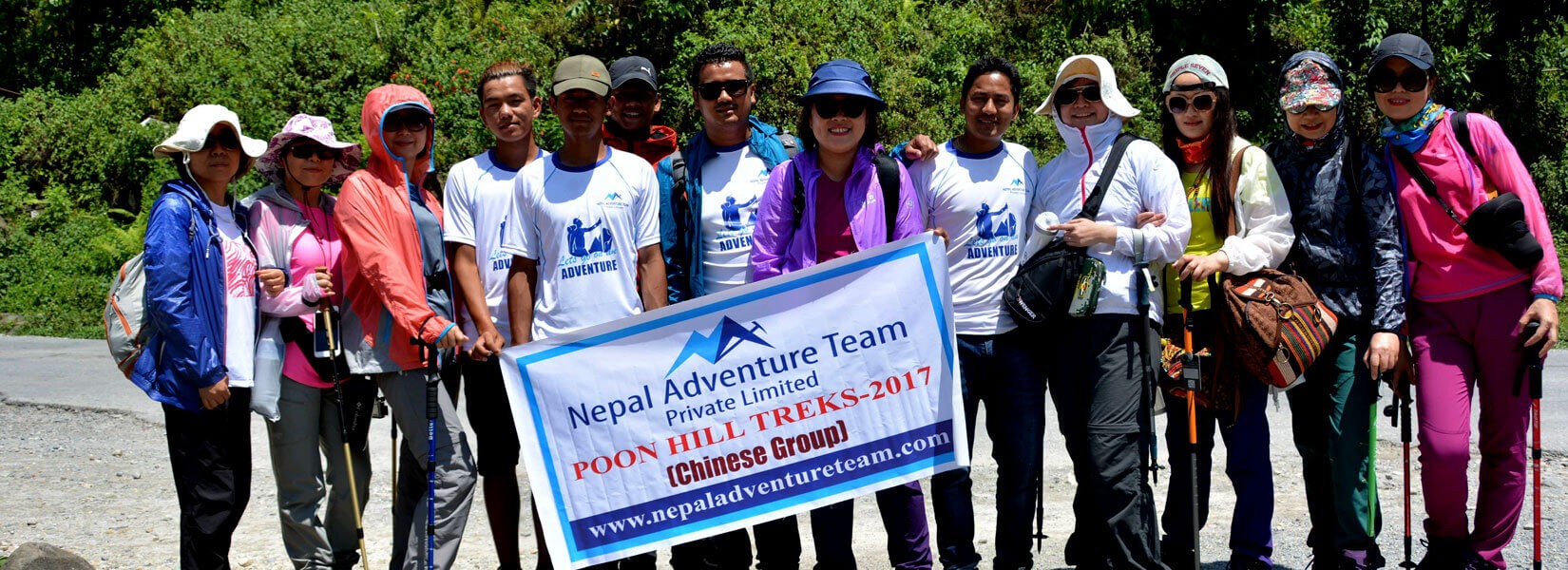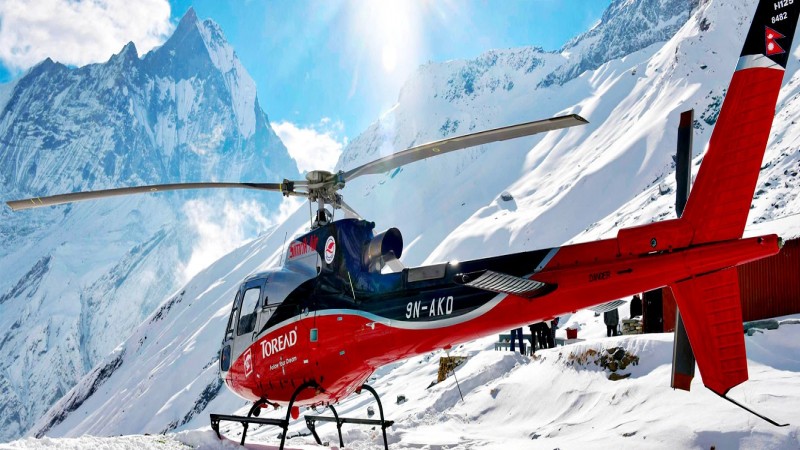Annapurna Community Trek is one of the exemplary trekking trails of Nepal promoting Eco-tourism as well as inclusive community development. Annapurna Community Trek was initiated and encouraged by Dr. Mahabir Pun, a local villager, activist, and social entrepreneur.
Annapurna Community Trek traverses trekkers through the elegant nature and its tranquility along with the beautiful blend of culture, eco-tourism concept, and information technology in rural areas. Trekkers can enjoy the Himalayas, terrace farmland, rhododendron forest, village lifestyle, ethnic group culture, and tradition as well as the local effort to incorporate information technology in education, health, and community development. Annapurna Community Trek leads you to the villages cooperating to have sustainable development of the community by balancing modern technology and the preservation of nature.
Story of Annapurna Community Trek
Annapurna Community Trek was initiated by Dr. Mahabir Pun. Dr. Mahabhir Pun won the Ramon Magsaysay Award in 2007 for Community Leadership and is highly dedicated to developing information communication technology in rural areas of Nepal.
Mahabir Pun is the habitat of Nagi village which comes along the Annapurna Community Trek. He faced a hard time getting the right information to pursue his education and saw the struggles of rural life in Nepal. Eventually, he managed to pursue higher education in the USA and returned to his village to overcome such a hard time and struggle for the coming generation. He exclusively made information technology accessible in villages and encouraged the community to utilize it in education, farming, healthcare, and information.
Annapurna Community Trek has been developed offbeat through some of the first villages to come under Mahabir Pun’s project and used to fund the project. While choosing Annapurna Community Trek, trekkers not only enjoy the trekking, Himalayas, nature, and Nepali villages but also contribute to an inclusive community development project.
Annapurna Community Trek
Annapurna Community Trek takes trekkers through the lap of the Annapurna and Dhaulagiri mountain ranges. It has already been mentioned that Annapurna Community Trek focuses on supplying closeness to nature and community. Homestay experiences are gained in Annapurna Community Trek along with communicating with locals and locals’ plans for sustainable development. The villages and communities involved in the Annapurna Community Trek are focused on promoting eco-tourism, inclusive community improvement, and sustainable development. The trekking of every visitor through Annapurna Community Trek contributes to their plans and encourages them to stick with it.
From Kathmandu, you will drive to Pokhara through Prithivi Highway and drive to Beni-Baglung Highway to reach Beni from Pokhara. The road trip will be filled with rivers, hills, forests, farmlands, and the Himalayas.
The walk for the Annapurna Community Trek begins from Galeshwor. Galeshwor is also famous for the Lord Shiva Temple. You will be staying at the villages as Bans Kharka, Nangi, Mohare Danda, Danda Kahrka, and Tikot which will give you the lifetime experience of simplicity and togetherness.
The trail is filled with woods, tranquility, and Himalayan views of Annapurna and Dhaulagiri. Nagi, the village of Dr. Mahabir Pun, is a tiny village with great wonders. Nangi has been working for inclusive development through education, technology, and the practice of eco-tourism. They promote local handicrafts, Lokta paper products, fish farming, and mushroom farming as well as preserve traditions and culture. Nagi village is an exceptional example of hardship and unity of community decorated by the Annapurna and Dhaulagiri ranges.
Besides, Mohare Danda is also considered to be an alternative to Ghorepani Poonhill Trek. Trails are scented by diverse vegetation as well as lead to the ridges offering an enhancing view of Dhaulagiri, Gurja Himal, Tukuche Peak, Dhampus Peak, Nilgiri, Barha Shikhar, Annapurna I, Annapurna South, Machhapuchhre, Annapurna II, Annapurna IV, Lamjung Himal, Manaslu, and many peaks.
Another amazing thing about this trail is that it has a wireless internet relay station providing internet to remote villages for education, health service, and communication. The magical moment of sunrise at Mohare Danda adds energy and pleasure to trekkers.
During March-May, the rhododendron blooms at its fullest and spreads its pinkish color throughout the hills. The mountains seem to be closer and bigger. Tikot is another pleasant village filled with Magar ethnic groups entertaining the trekkers with cultural dance and music.
The homestay during the Annapurna Community trek will offer you closeness to the local community, lifestyle, and culture. Additionally, the village has old traditional stone walls houses with eco-cottage features and slate roofs with satellites to connect wireless wifi. You can also enjoy the traditional Magar dance.
Nepal Adventure Team has been organizing and arranging the Annapurna Community Trek for enthusiastic trekkers as well as customizing and combining the Annapurna Community Trek as per the trekkers’ requirements.




